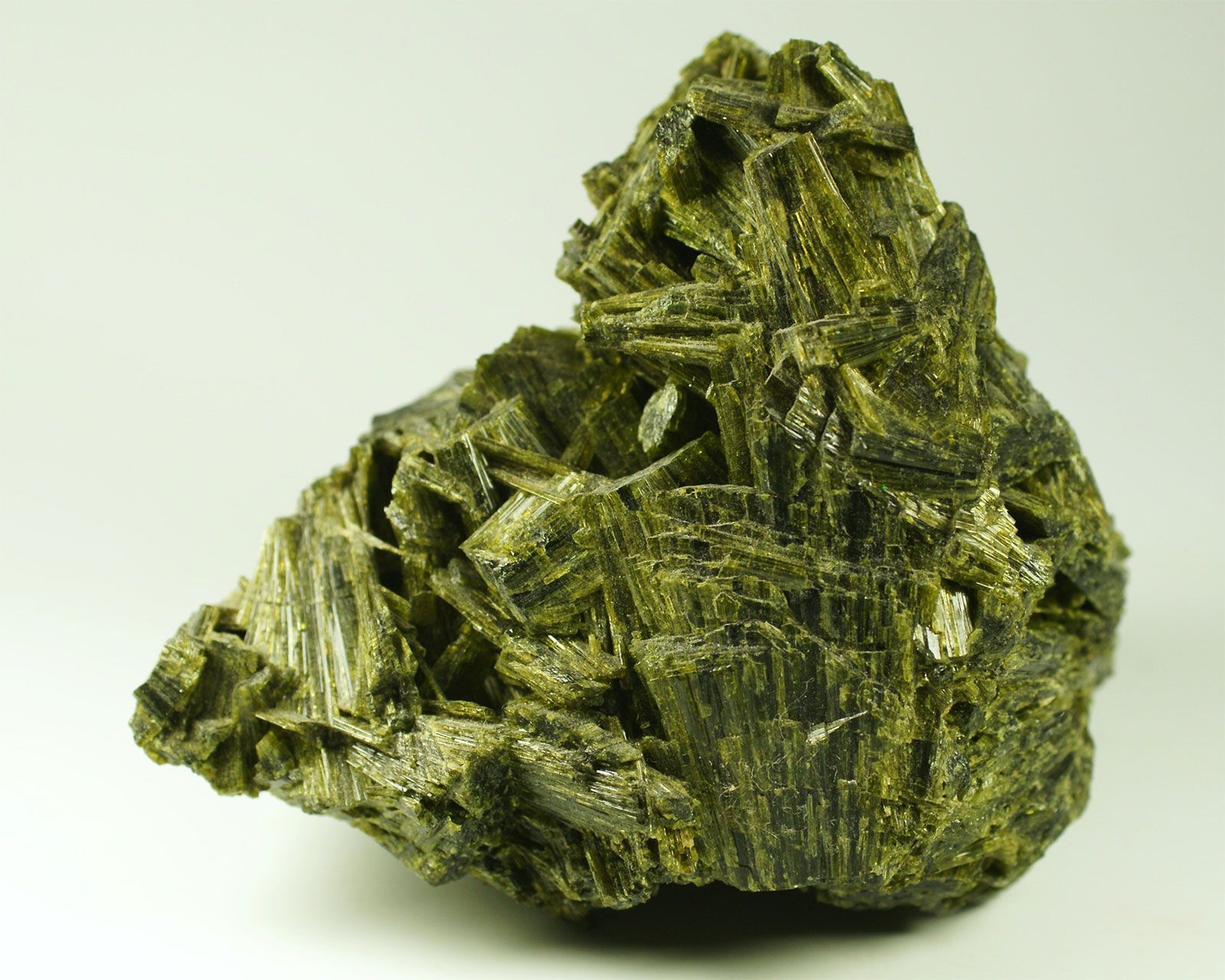
What makes Aliettite so special? This rare mineral, named after Professor Andrea Alietti, offers a unique glimpse into the world of complex geological processes. With a chemical formula of Mg3Si4O10(OH)20.33(Al,Mg,Fe++)2-3(Si,Al)4O10(OH)2•n(H2O), Aliettite stands out due to its intricate composition. Found in metamorphic rocks, it often appears colorless to pale yellow or green, forming minute tabular to platy crystals. Despite its softness, Aliettite's structure is highly ordered, making it a subject of scientific intrigue. Its association with other magnesium-phyllosilicates like talc highlights its geological significance. Whether you're a geology student or a mineral enthusiast, Aliettite offers a captivating study into the complexities of Earth's mineralogy.
Key Takeaways:
- Aliettite is a rare, soft mineral with a complex chemical formula. It's found in specific geological settings and holds scientific and educational significance, making it an important subject for research and learning.
- Understanding aliettite's physical and structural properties can provide insights into its behavior and formation. While not widely used in industry, studying this mineral contributes to broader scientific knowledge and may have potential future applications.
What is Aliettite?
Aliettite is a rare mineral that has piqued the interest of geologists and mineralogists alike. Its unique composition and properties make it a subject of fascination. Here are some intriguing facts about this mineral.
-
Chemical Formula
Aliettite has a complex chemical formula: Mg3Si4O10(OH)20.33(Al,Mg,Fe++)2-3(Si,Al)4O10(OH)2•n(H2O). This formula indicates a rich blend of elements. -
Crystal System
Aliettite crystallizes in the monoclinic system, a relatively rare crystal system among minerals. This system contributes to its unique structural properties. -
Appearance
The mineral is soft, colorless to pale yellow or green, and has an earthy appearance. It forms minute tabular to platy crystals, making it visually distinct. -
Discovery
Named in honor of Andrea Alietti, a professor at the University of Modena, Italy, who first studied its structure. His work laid the foundation for understanding this mineral. -
Composition
Composed of magnesium (Mg), silicon (Si), oxygen (O), hydrogen (H), calcium (Ca), sodium (Na), aluminum (Al), and iron (Fe), aliettite is a complex blend of elements.
Where is Aliettite Found?
Aliettite's occurrence is limited to specific geological settings, often associated with other magnesium-rich minerals. Let's explore where this rare mineral can be found.
-
Occurrence
Found in specific geological formations, often alongside other magnesium-phyllosilicates like talc and Mg-smectite. These associations help identify its presence. -
Geological Setting
Typically found in metamorphic rocks, particularly in areas with significant alteration due to high pressure and temperature conditions. These conditions are crucial for its formation. -
Regional Distribution
Aliettite has been discovered in specific regions, often in association with other magnesium-rich minerals. Its distribution is limited due to its rarity. -
Olympus Mine
One notable location where aliettite has been found is the Olympus mine in Canada. The characterization of aliettite-bearing rocks from this mine has been documented in scientific literature.
Physical Properties of Aliettite
Understanding the physical properties of aliettite helps in identifying and studying this mineral. Here are some key physical characteristics.
-
Hardness
Despite its complex composition, aliettite is relatively soft, which is unusual for a mineral with such a high degree of structural order. -
Density
The density of aliettite is not specifically documented in most sources, but its softness suggests it may have a relatively low density compared to other minerals. -
Cleavage
Aliettite exhibits cleavage, the tendency of a mineral to break along flat surfaces. This characteristic is common among phyllosilicates. -
Streak
The streak of aliettite, which is the color of the mineral when powdered, is typically white or pale yellow, reflecting its composition. -
Luster
The luster of aliettite is described as earthy, indicating a dull, non-metallic appearance.
Optical and Structural Properties
Aliettite's optical and structural properties provide insights into its behavior and formation. Let's delve into these aspects.
-
Optical Properties
Aliettite is biaxial, meaning it has two distinct optical axes. Its refractive indices are not well-documented but are likely similar to other phyllosilicates. -
X-Ray Diffraction (XRD) Patterns
XRD patterns have been used to identify aliettite in geological samples. These patterns help distinguish it from other minerals with similar compositions. -
Genesis
The genesis of Mg-phyllosilicate occurrences, including aliettite, involves high-pressure and high-temperature metamorphism. This process transforms primary minerals into secondary ones like talc and aliettite.
Scientific and Educational Significance
Aliettite holds significant value in scientific research and education. Here are some reasons why this mineral is important.
-
Mineralogical Database
Aliettite is listed in various mineralogical databases, including WebMineral, which provides detailed information on its composition and occurrence. -
Scientific Research
Research on aliettite focuses on understanding its structure, composition, and genesis. Studies often involve XRD analysis and other spectroscopic techniques to elucidate its properties. -
Educational Significance
As a rare mineral, aliettite serves as an important educational tool for geology students. It helps illustrate complex geological processes and mineralogical concepts.
Practical Considerations and Future Research
While aliettite is not commonly used in industry, its study contributes to broader scientific knowledge. Let's look at some practical considerations and future research directions.
-
Collection and Preservation
Due to its rarity and softness, collecting and preserving aliettite specimens requires careful handling. Many specimens are stored in museums or specialized mineral collections. -
Industrial Applications
While not commonly used industrially, studying aliettite contributes to understanding magnesium-rich minerals, important in various industrial applications such as ceramics and refractories. -
Environmental Impact
The formation of aliettite is often associated with high-pressure metamorphism, which can alter the environmental conditions of surrounding rocks. This process can affect local ecosystems. -
Future Research Directions
Future research on aliettite may focus on its potential uses in advanced materials science, as well as further elucidating its role in high-pressure metamorphic processes. -
Optical and Spectroscopic Studies
Studying its optical and spectroscopic properties could provide insights into its structural behavior, enhancing our understanding of this rare mineral.
Final Thoughts on Aliettite
Aliettite is a rare, fascinating mineral with a complex chemical formula and unique properties. Found in metamorphic rocks, it’s often associated with minerals like talc. Named after Professor Andrea Alietti, this mineral crystallizes in the monoclinic system and appears colorless to pale yellow or green. Despite its intricate structure, aliettite is relatively soft and exhibits cleavage, making it an interesting subject for scientific research and education.
Its rarity and specific geological settings make it a valuable find for collectors and researchers alike. While not commonly used industrially, studying aliettite helps us understand magnesium-rich minerals better. Future research might uncover new applications or further insights into its formation and properties. Aliettite's unique characteristics and limited occurrence make it a gem in the world of mineralogy, offering endless opportunities for discovery and learning.
Frequently Asked Questions
Was this page helpful?
Our commitment to delivering trustworthy and engaging content is at the heart of what we do. Each fact on our site is contributed by real users like you, bringing a wealth of diverse insights and information. To ensure the highest standards of accuracy and reliability, our dedicated editors meticulously review each submission. This process guarantees that the facts we share are not only fascinating but also credible. Trust in our commitment to quality and authenticity as you explore and learn with us.


